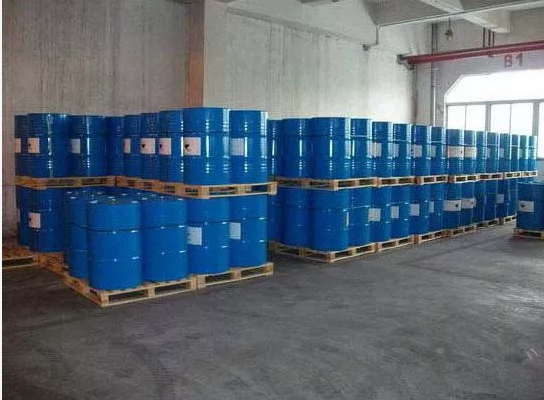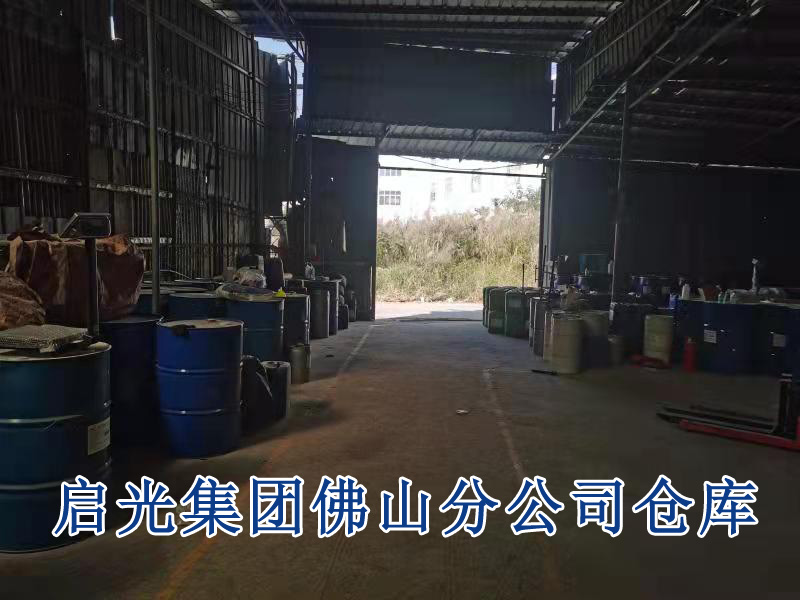1. Basic reactions and data
Polyurethane soft foam is formed by two basic reactions: foaming reaction and polymerization reaction (also called gel reaction).
Foaming reaction: a reaction in which isocyanate reacts with water to form disubstituted urea and carbon dioxide. The reaction formula is as follows:
2R-N=C=O+HOH→R-NH-CO-NH-R+CO2↑
If TDI is used, according to the above reaction formula, 1 part of water requires 9.67 parts (about 9.7 parts of TDI)
The released carbon dioxide becomes the bubble core, causing the reaction mixture to expand and obtain a foam with an open cell structure.
Polymerization reaction: a stepwise polymerization reaction between hydroxyl groups in polyether and isocyanate to form urethane. The reaction formula is as follows:
R=N=C=O+R′-OH→R-NH-COO—R′
If TDI is used, according to the above reaction formula, it can be concluded that the reaction of 100 parts of polyether with a hydroxyl value of 56 requires 8.68 parts (about 8.7 parts of TDI)

2. Polyol
Domestic block foam production uses soft foam polyether with 3 functionalities and molecular weight of 3000 (hydroxyl value 56) or 3500 (hydroxyl value 48, less used). Such as our company’s JH-3031K, JH-3050D, JH-3500, etc.
3. Polyisocyanate
Toluene diisocyanate (TDI) is mainly used. There are three main types of TDI industrial products: pure 2,4 TDI (or TDI100), TDI80/20, and TDI65/35. TDI80/20 has the lowest production cost and is the most widely used variety in industry.
The molecular weight of TDI is 174, and the molecular weight containing 2 isocyanate groups (-N=C=O) is 84, so the isocyanate content in TDI is 48.28%.
The amount of TDI has a great influence on the foam performance. In the foam formula, the excess degree of TDI is expressed by the isocyanate index. The isocyanate index refers to the ratio of the actual amount and the theoretical calculated amount. When producing soft foam, the general index is 105-115 (100 is equal to the theoretical calculation amount) (or written as 1.05-1.15, 1 is the theoretical calculation amount). Within this range, the TDI index increases and the foam As the hardness increases, the tear strength becomes smaller, the tensile strength becomes smaller, and the elongation at break becomes smaller. If the TDI index is too high, large pores and closed pores will be formed. If the curing time is too long, it will also cause foam heartburn; if the TDI index is too low, cracks will easily occur, with poor resilience, poor strength, and large compression permanent deformation.
4. Foaming agent
The reaction between water and TDI produces carbon dioxide, which is the main foaming agent used in soft foam foaming. Increasing the amount of water in the formula will increase the urea content, increase foam hardness, reduce foam density, and reduce the foam load capacity. However, TDI reacts with water to produce a large amount of heat. If the amount of water is too high, the foam will cause heartburn or burning.
Methylene chloride is a physical foaming agent with a boiling point of 39.8°C. It is a non-flammable gas and can vaporize during foaming, reducing the density and hardness of the foam. The amount of methylene chloride added must not only prevent heartburn in the foam, but also ensure that too much methylene chloride does not displace too much heat and affect the maturation of the foam. At the same time, it is necessary to ensure that the physical properties of the foam do not decline significantly. Therefore, the amount of methylene chloride has a certain limit.
The foaming efficiency of water and methylene chloride (that is, the same volume of gas is produced) has the following empirical relationship:
1 part water = 9 parts methylene chloride
Foaming index: that is, the amount of foaming agent used in the formula based on 100 parts of polyether.
Foaming index = water + methylene chloride/9
The approximate relationship between foaming index and density is 100/foaming index, which is the formula when no fillers are added to the formula. When filler is added, the density is greater than calculated by this formula.

5. Catalyst
The main function of the catalyst is to adjust the speed of the foaming reaction and gelation reaction to keep them in a good balance.
Triethylenediamine (A33, 33% dipropylene glycol or propylene glycol solution) is the most important tertiary amine catalyst in soft foam production. It has 60% effectiveness in promoting the reaction between isocyanate and water, that is, the foaming reaction. , 40% is used to promote the reaction between hydroxyl groups and isocyanates, that is, the gel reaction.
Bis(2,2-dimethylaminoethyl) ether (A-1) is a soft foam universal tertiary amine catalyst.
TDI Index 55.4
6) Soft foam formula with a density of 23Kg/cubic meter
Parts by weight
Polyether 100
Water 3.6
Silicone oil 1.14
Stannous octoate 0.35
A33 0.06
A-1 0.02
Dichloromethane 3.5
TDI Index 106 (i.e. 3.6*9.7+8.7=43.62*1.09=47.55)
7) Soft foam formula with a density of 26Kg/cubic meter
Parts by weight
Polyether 100
Water 3.6
Silicone oil 1.0
Stannous octoate 0.15
A33 0.3
Dichloromethane 0
TDI index 107 (i.e. 3.68*9.7+8.7=43.63*1.07=46.67)
8) Soft foam formula with a density of 30Kg/cubic meter
Parts by weight
Polyether 100
Water 3.3
Silicone oil 1.1
Stannous octoate 0.23
A33 0.34
TCPP 5.0
TDI index 107
9) Soft foam formula with a density of 35Kg/cubic meter
Parts by weight
Polyether 100
Water 2.5
Silicone oil 1.0
Stannous octoate 0.30
Amine catalyst 0.10
TDI index 105